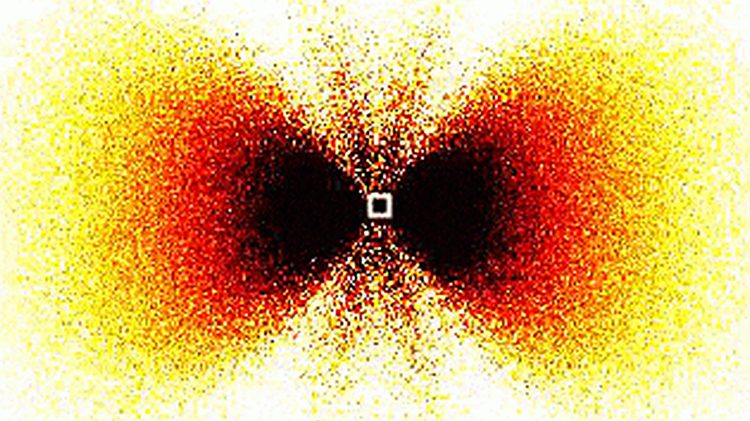
CSI-free Rotary Antenna Beamforming for Massive RF Wireless Energy Transfer
Radio frequency (RF) wireless energy transfer (WET) technology realizes battery charging without physical connections and favors form factor reduction and durability increase of the end devices. It will help simplify servicing and maintenance while also reducing waste.

WET solutions are attractive for wirelessly and sustainably energizing future extremely massive Internet of Things (IoT) systems. Note that future IoT deployment densities may scale up to tens of devices per square meter (devices/m^2), for which network planning, maintenance and operation should be made robust as well as simple and flexible.
Supporting the powering of massive IoT deployments via WET — referred to as massive WET in the literature— constitutes a relatively novel and challenging problem. Among the main approaches to enable massive WET are the densification and appropriate deployment of dedicated energy transmitters, also called power beacons (PBs), the exploitation of massive number of transmit antennas and channel charging strategies requiring low communication overhead to limit the energy expenditure of the participating energy harvesting (EH) devices.
PBs traditionally require channel state information (CSI) of the WET links to increase the energy transfer via energy beamforming. However, accurate CSI acquisition requires significant amounts of time and energy from the EH devices, which may erase (or even reverse) the gains from energy beamforming. Also, CSI training and corresponding energy expenditure scale up exponentially in massive IoT deployments, thus, becoming extraordinarily costly and challenging. In addition, the (possible) gains from energy beamforming decrease quickly as the number of served devices increases. To overcome these limitations in (possibly massive) WET setups, we have been proposing efficient CSI-limited/free WET schemes in the last few years.
“In one of our recent works, we take a significant step forward by proposing a novel “rotary antenna beamforming” (RAB) CSI-free scheme for massive WET. Specifically, our proposal includes a rotor into the PB’s antenna array and makes it continuously rotate while delivering wireless energy via an optimized CSI-free energy beam. As a result, robustness against no line of sight (NLOS) conditions is inherently achieved,” says Assistant Professor Onel Luis Alcaraz López from CWC-Radio Technologies.

To avoid costly rotor equipment and ease the implementation, researcher propose using a stepper rotor with at least M equally spaced steps and show that the resulting effective radiation pattern (after averaging over time) becomes quasi-omnidirectional. RAB performance is further optimized by employing rotation-specific power control mechanism exploiting the devices’ positioning information. Remarkably, an average EH gain of approximately 0.85√M, where M is the number of PB’s antenna elements, is attainable with respect to single-antenna WET and other state-of-the-art CSI-free multi-antenna schemes.
The following figure shows the attainable performance regarding average RF power availability in a 20 × 20 m^2 area served by a PB at the area centre that uses state-of-the-art CSI-free WET schemes and our proposed RAB strategy. Interestingly, RAB allows covering up to 65% of the area with a guarantee of −22 dBm (∼ 6 µW). The percentage is significantly greater than the guarantees of the competing CSI-free schemes. Indeed, RAB is shown to outstand for both loose and tight energy requirements.

Another relevant aspect of sustainability lies in controlling RF pollution. Although, RF transmission in microwave bands is non-ionizing and thus unable to change the structure of atoms and molecules with potentially carcinogenic effects, international regulatory bodies have set several safety limits to constrain the electromagnetic field (EMF) exposure and to avoid biological effects such as tissue heating. WET systems (as any wireless system) are subject to strict EMF regulations, e.g., in terms of specific absorption rate (SAR) and/or maximum permissible exposure (MPE). Specifically, SAR measures the absorbed power in a unit mass of human tissue by using units of Watt per kilogram [W/kg], while MPE constraints the level of EMF radiation specified [W/m^2] units. Our work focuses on the former, which becomes more relevant than MPE for short distances, e.g., up to a few meters. Specifically, we included SAR constraints to the proposed per-rotation power control mechanism to make RAB compliant with EMF regulations, thus, avoiding potential risks to human health.
“The outstanding features of RAB and associated performance gains are very promising. Still, much work is needed to further mature/strengthen WET technology, especially in the context of massive WET. We are constantly working towards enabling a fully wireless sustainable society,” concludes López.